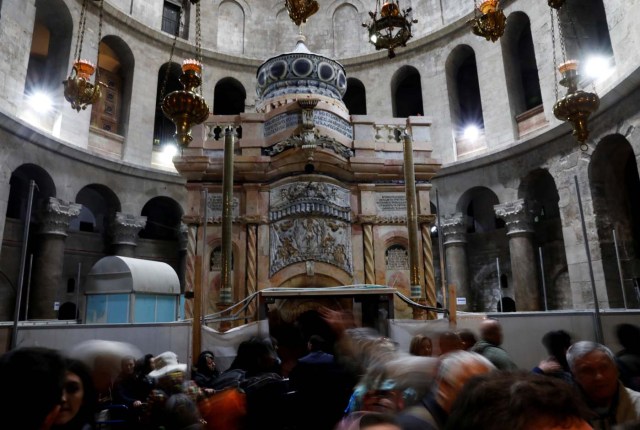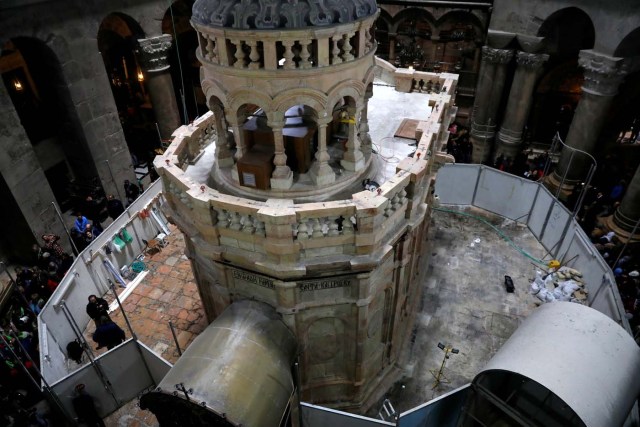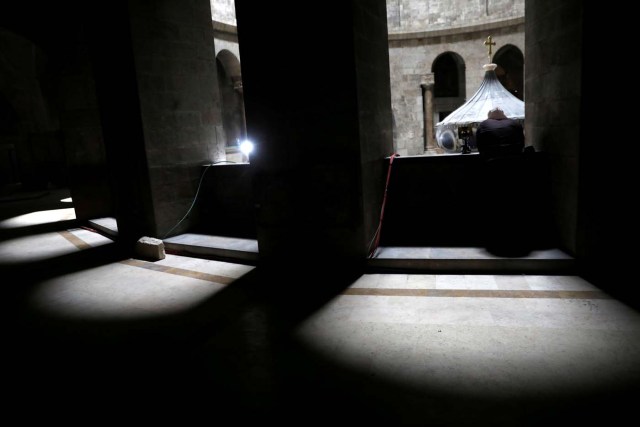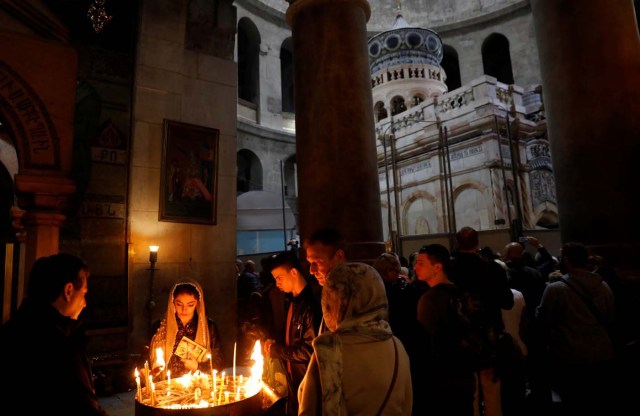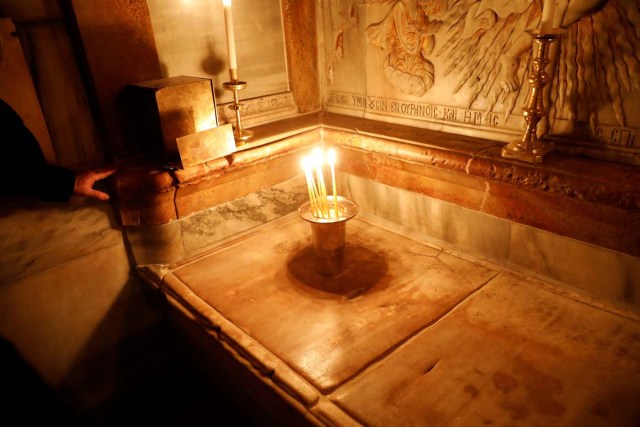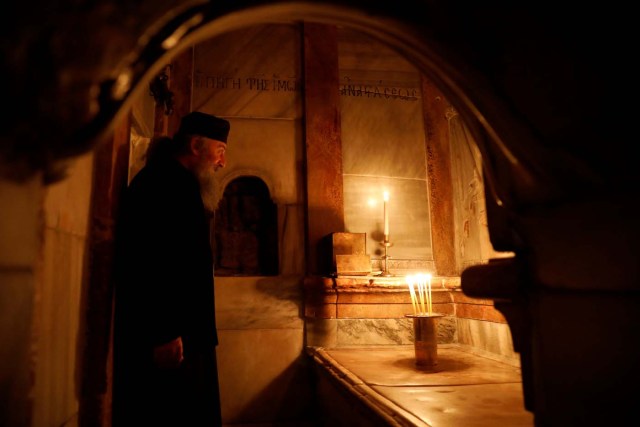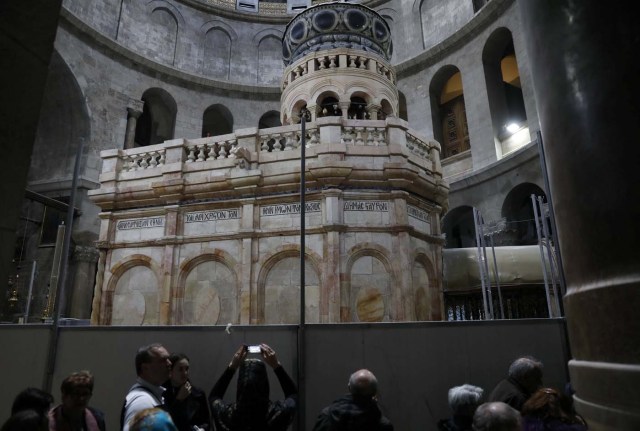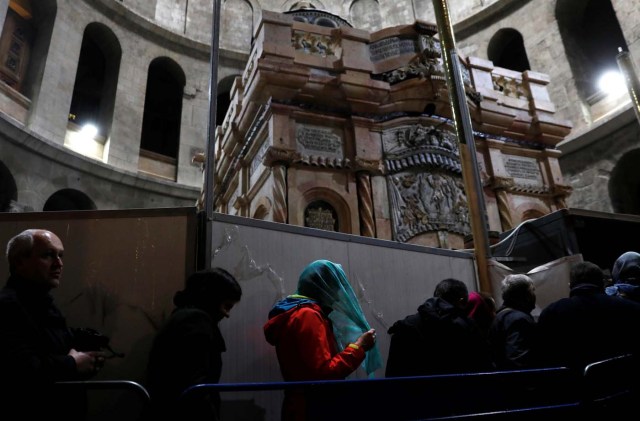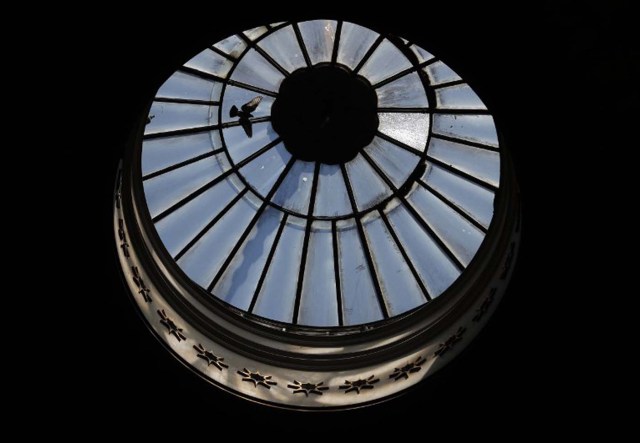
Las obras de restauración del Edículo y la Cúpula que protegen la Tumba de Jesucristo han terminado a tiempo y los resultados serán presentados este miércoles, confirmó hoy en la Iglesia del Santo Sepulcro de Jerusalén la encargada de la restauración, Antonia Moropoulou.
“Ahora se puede ver el color y la textura, las inscripciones, los frescos”, dijo Moropoulou junto a la centenaria estructura, donde la tradición cristiana sitúa el enterramiento y resurrección de Jesús, tras diez meses de restauración durante los que se han limpiado las láminas de mármol del armazón y se ha reforzado su estabilidad.
Además, se han sustituido losas dañadas, se han cubierto las grietas con pegamento, rellenado fisuras y reforzado soportes para un “monumento que durará para siempre”, resaltó la jefa griega de la rehabilitación.
A finales de febrero, se retiraron los andamiajes, colocados por los británicos en 1947, y las lonas y mamparas que rodean el Edículo se quitarán en las próximas horas para que quede despejado de materiales de obra de cara al próximo 22 de marzo, fecha de presentación.
En lo alto de la cúpula reluce una cruz greco-ortodoxa, que no estaba antes de la restauración y que según el franciscano y arqueólogo, Eugenio Alliata, podría pertenecer al proyecto original del Edículo.
Con un presupuesto inicial de 3 millones de euros, el equipo restaurador ha contado con una financiación total de 6 millones, el 80% por donaciones desde el exterior, declaró a Efe Bonnie Burnham, ex presidenta del Fondo de Monumentos Mundiales (WMF, por sus siglas en inglés).
Moropoulou se ha mostrado satisfecha con los trabajos y pide ahora a “la comunidad cristiana que lo mantenga”.
También ha sido de gran complejidad drenar el agua y los desechos subterráneos acumulados en los cimientos que estaban deteriorando el esqueleto del Edículo, unos trabajos que tendrían que continuar para evitar un deterioro en el futuro.
El pasado mes, la jefa de la restauración entregó a los tres Custodios – el greco-ortodoxo, el armenio apostólico y el católico romano – el proyecto de “estabilización de cimientos” que todavía están estudiando.
Las obras han sido posibles gracias al acuerdo de las tres iglesias y Moropoulou espera que esta rehabilitación inaugure una “nueva era para Tierra Santa, una era de comunicación”.
El templo del Santo Sepulcro ha estado abierto durante todo el proceso de restauración y solo fue cerrado al público 36 horas, cuando se retiró la lápida que cubría la fosa original de Jesucristo, un hecho que no ocurría desde hace cinco siglos. EFE
Fotos Reuters
